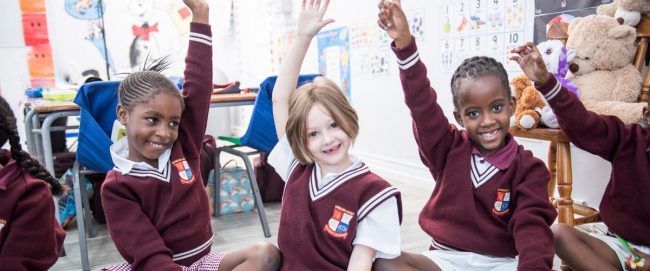A thriving learning environment requires many elements. It doesn’t matter if it is your first year of education or your thirty-fifth. The first weeks, months, and days of the school year are crucial to creating the learning environment that you desire for your students.
Relationship building starting at day one
Start building relationships with middle school and high school students the day you start school. Then, grow them throughout the year.
Relationships that are good
Start early. Develop positive relationships with parents and students starting on the first day. Students can get to know each other by creating fun icebreakers and exchanging letters. To establish these relationships, you can send a letter to your parents or call each house.
Take your time. Although it may be tempting to rush to get into the content as soon as school starts, taking the time to develop relationships will pay dividends later. Your students will benefit from your personal relationships and the community you create.
Ask for help. Your greatest resource is your fellow faculty members and staff. Reach out to your teachers and the thousands of Twitter teachers. You will find someone who can answer your question and wants to be connected with you.
Clear Communication
Use their language. To get to their level, use humor, technology, or other strategies. This extra effort will make it easier to relate to students. This strategy can also be used to present “mundane” information such as classroom rules and regulations.
Start from scratch. While you may be familiar with the rules, your students will likely not. It is important to not assume that your students are able to complete simple tasks like taking notes or collaborating. It can be tedious, but it will pay off, just like building relationships.
Trust
Let students decide. From classroom layouts to project ideas, students can have a say. You can make easier for students and make it more fun.
Trust technology. Although new tech can seem daunting, there are a few ways you can make your class digital. Some educators recommend creating a digital newsletter to parents, updating on Instagram and Twitter with photos, setting up a blog or using edtech resources such as Remind or Google Forms. This is a great way for students to be engaged even when classes aren’t in session.
Be confident in your abilities! You don’t need to be perfect the first day, or even the first week.
Our Vision
To create an environment where independent schools can learn and be a pillar in the community. While providing education …, we aim to instill strong morals and values.
Remember that you and your students can only be human. It doesn’t matter how much you plan, map, or research, once your kids are in the room, anything is possible. It doesn’t mean you have to have it all together from day one.
Tips to Create a Safe Learning Environment
1. Every year, community is built. Include strategies and activities such as Save The Last Word for me in your lessons that will allow students to share their thoughts, create relationships and collaborate. This will allow your students to feel safe and secure in their classroom.
2. Students own the space when they see student work, such as essays, poems and projects. They will feel more comfortable if they can see their writing and thinking than they do if they are looking at posters from the store. If informational posters are required, you can ask your students for help.
3. Know your non-negotiables. Students must be able to recognize and comply with school rules and procedures. My biggest non-negotiable? Name calling. The immediate consequence was a call to the dean, and the removal of the class that day. Defeat name calling immediately or the kids will not feel safe enough to be themselves and learn.
4. Accept What You Don’t Understand. Students love it when we are open to sharing our humanity. “I don’t really know.” Is there anyone who knows or would they be willing to help us? It is powerful stuff.
5. This is a way to communicate with your students: I enjoy reading. I don’t tell you what I think and then grade you on your reading. I actually read alongside you. You can see my expressions when I am struggling to understand something and what I feel at the end of a funny or sad part. I’m also a reader.
6. Keep calm at all times. It takes time to regain that sense of safety and trust once a teacher has lost it with students or a class. Take a few deep breaths and step outside the door. It is worth it.
7. You will be a role model for others.
8. Mingling allows you to monitor students’ work but also lets you see if there are any tensions between students or groups. Circulating gives you the opportunity to hear students sharing ideas or questions that you can share with the class.
9. You can address grudges early. Create space and time for students to discuss their feelings while you mediate.
10. Write with your students. This sends the message: I enjoy writing. I don’t tell you what to do and then grade your writing. I actually write alongside you. As I write a letter or poem, you can see me struggling. You also see me considering new words and cross-out old ones. I take risks as I revise. I’m also a writer.
Our Mission
We can leave a legacy that is more than knowledge from independent schools by instilling excellence and perseverance.
How to create a friendly classroom environment
In just 10 steps, you can create an environment conducive to learning.
-
Show enthusiasm to your students every day. Have as many positive things as you can say.
-
Students should be given the opportunity to share events and other information with you. It doesn’t matter if there is a set time each day that 3-5 students can share with you, it will create an environment of warmth, friendliness, and acceptance. This shows your students that you care. It also gives you the opportunity to learn more about each student.
-
Share something you find important with your students. You will be seen by your students as a caring and real person. This kind of sharing should not be done daily, but only from time to time.
-
Talk about differences in the classroom. Children can benefit from understanding diversity early on. Discuss cultural differences, body images, body types, talents and strengths. Your learners should have the opportunity to share their weaknesses and strengths. Even though a child may not be able run fast, they may be able draw well. These conversations should always be positive. Children will benefit forever from the ability to understand diversity. It fosters trust and acceptance within the classroom.
-
Be clear about your stance against bullying. Bullying is not tolerated in a nurturing and welcoming environment. Make sure that bullying is reported early to stop it from happening. It is not bullying to report on a bully, but tattling. You should have a set routines as well as rules to prevent bullying.
-
Create activities that encourage students to work together, and build rapport. Establish routines and rules for teamwork and small group work.
-
Remember to focus on your strengths when you call upon a student. Don’t judge a child because they aren’t able to do it, but take the time to help the child. Asking a child to show or respond to something should be done in the child’s comfort zone. Always capitalize on their strengths. It is important to show compassion and understanding to your students in order for them to have confidence and self-esteem.
-
Encourage two-way respect. Two-way respect is something I cannot stress enough. Respect is a golden rule. You will always get it back if you show it.
-
Spend time educating the class about disabilities and disorders. Role playing helps develop empathy and support among peers and classmates.
-
Encourage self-confidence and self-esteem in every student in your classroom. Show appreciation and praise when it is due. Students will feel better about themselves and toward others if they feel positive.
Our Philosophy
We believe in sharing knowledge and learning through exploration, investigation, and discussion.


